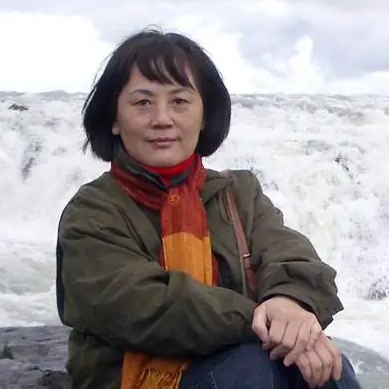Tan Longjian
 Tan Longjian, female, born on July 28, 1952, is currently a Sanxian teacher and master tutor at the Central Conservatory of Music.
Tan Longjian, female, born on July 28, 1952, is currently a Sanxian teacher and master tutor at the Central Conservatory of Music.From 1964 to 1973, he studied the sanxian major in the middle school attached to the China Conservatory of Music. After graduation, he worked as a sanxian teacher at the Tianjin Conservatory of Music. In 1977, he was admitted to the Folk Music Department of the Central Conservatory of Music and continued to study the sanxian major. During this period, he went to Finland for further study and obtained a master's degree in music from the Sibelius Academy of Music in Finland in 1994. He is still a doctoral student in ethnomusicology at the University of Helsinki, Finland.
In the more than 30 years of playing practice in the sanxian profession, I have extensively studied and absorbed the styles and characteristics of various schools, and learned from the strengths of various schools, thus forming my own unique playing style: the left hand pays attention to yin, yin, Crush, hit, advance, retreat, chuo, note, rich in flavor and endless changes; the right hand is particular about long as running water, short as broken beads, sound of gold and stone, firm and soft, and its performance is focused on the pursuit of pure and natural music, passion There is no lack of deep, delicate and rough, vivid description reflects profound insight, emotional expression is full of philosophical thinking. In recent years, he has held more than 30 sanxian solo concerts at home and abroad, participated in nearly 100 performances in various forms from traditional works to modern works, and recorded CD records and tapes of personal solo albums, in order to promote and promote Sanxian's musical art has made great efforts.
He has been devoted to the research and practice of sanxian teaching theory and performance theory for many years, compiled a large number of sanxian etudes and teaching materials, and wrote and published many books and papers on sanxian teaching and performance, such as: "Sanxian Performance Art" " Sanxian Tutorial, "Introduction and Improvement of Sanxian Self-study", "Discrimination and Analysis of the Musical Score of "Acacia Order", "Talking about the Change of Sanxian", "Reflections on Sanxian Teaching Theory and Practice", etc., have established a relatively complete and scientific teaching system. He has taught and trained many excellent sanxian players and achieved good teaching results. At the same time, he is also deeply involved in the excavation and research of traditional music, and has published some academic papers of considerable achievements. In 1984, he advocated and organized the research and performance of the handed down masterpiece "Xian Suo Preparation".
All the music of the ensemble is presented live on the stage, attracting great attention both at home and abroad. In order to excavate and inherit the traditional music of Sanxian, I found Mr. Aixinjueluo Yujiao, the descendant of the Qing imperial family and the only successor of Xiansuo music. After more than two years of hard work, he recorded and sorted out an endangered traditional music of Sanxian—— "The Music of the Former Qing Dynasty Prince Gong's Mansion Aixinjue Luo Yujiao Sanxian Biography", so that this precious cultural heritage can be carried forward. Mr. Pujie wrote an inscription for the publication of this biography. The biography has had a great influence in the academic circles, filling a gap for the study of Chinese music history.
Similar artist
Involving musical instruments
Involved portfolio
Involved news
Popular artists
- 01 Zhang Xiuyan
- 02 Chen Tao
- 03 Li Muliang
- 04 Zhu Changyao
- 05 Zhang Gaoxiang
 渝公网安备 50010702504639号
渝公网安备 50010702504639号